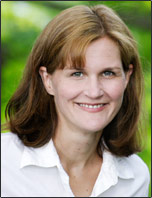
Mediators can affect the relationship between X and Y. Moderators can affect the scale and magnitude of that relationship. And sometimes the mediators and moderators affect each other.

Mediators can affect the relationship between X and Y. Moderators can affect the scale and magnitude of that relationship. And sometimes the mediators and moderators affect each other.
In a statistical model–any statistical model–there is generally one way that a predictor X and a response Y can relate:
This relationship can take on different forms, of course, like a line or a curve, but there’s really only one relationship here to measure.
Usually the point is to model the predictive or explanatory ability, the effect, of X on Y.
In other words, there is a clear response variable*, although not necessarily a causal relationship. We could have switched the direction of the arrow to indicate that Y predicts X. Or used a two-headed arrow to show a correlation, with no direction, but that’s a whole other story.
For our purposes, Y is the response variable and X the predictor.
But a third variable–another predictor–can relate to X and Y in a number of different ways. How this predictor relates to X and Y changes how we interpret the relationship between X and Y. (more…)
Mediation indicates that a mediator M is the causal link in the effect between an independent variable X and a dependent variable Y.
How to test mediation has become a very hot topic of statistical research in the past 10 years, and there are many new advances.
In this webinar, we’ll discuss a number of issues, new and old, in mediation, including the Baron & Kenny 4-step approach, the difference between mediation and moderation, Sobel and bootstrap tests for indirect effects. (And of course, what all these terms mean.)
Note: This training is an exclusive benefit to members of the Statistically Speaking Membership Program and part of the Stat’s Amore Trainings Series. Each Stat’s Amore Training is approximately 90 minutes long.

Karen Grace-Martin helps statistics practitioners gain an intuitive understanding of how statistics is applied to real data in research studies.
She has guided and trained researchers through their statistical analysis for over 15 years as a statistical consultant at Cornell University and through The Analysis Factor. She has master’s degrees in both applied statistics and social psychology and is an expert in SPSS and SAS.
Just head over and sign up for Statistically Speaking. You'll get access to this training webinar, 130+ other stats trainings, a pathway to work through the trainings that you need — plus the expert guidance you need to build statistical skill with live Q&A sessions and an ask-a-mentor forum.
One of the biggest questions I get is about the difference between mediators, moderators, and how they both differ from control variables.
I recently found a fabulous free video tutorial on the difference between mediators, moderators, and suppressor variables, by Jeremy Taylor at Stats Make Me Cry. The witty example is about the different types of variables–talent, practice, etc.–that explain the relationship between having a guitar and making lots of $$.